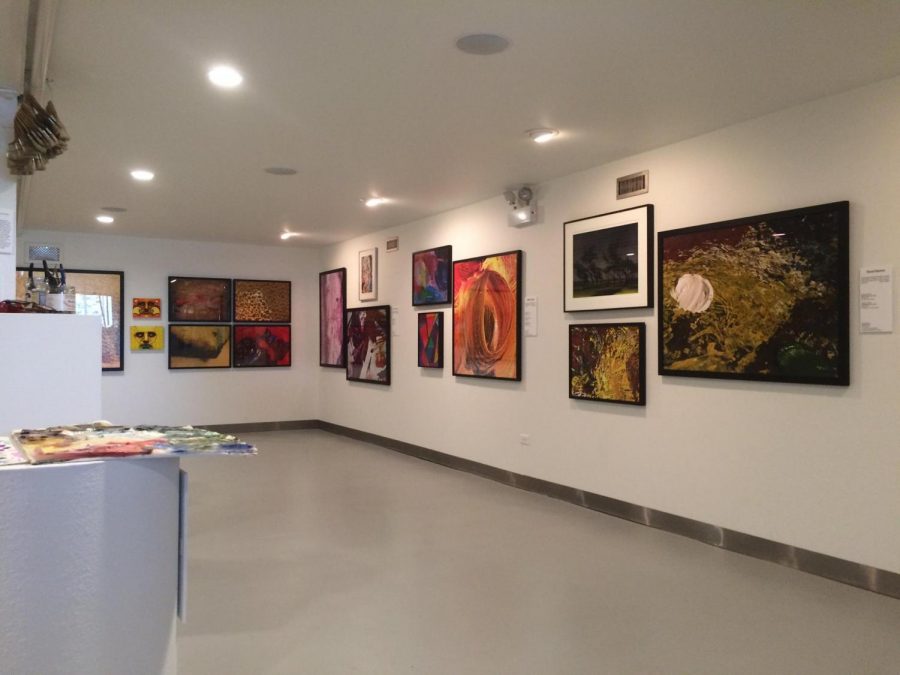‘La Palette’ exhibit blends photography, painting, neurology
Courtesy Ed Paschke Art Center
Dr. Stephen Sheldon is a professor of pediatrics and neurology at Northwestern University and director of the Sleep Medicine Center at Lurie Children’s Hospital, 225 E. Chicago Ave.
November 9, 2015
To audiences viewing a completed artwork, the creative process behind it can seem mysterious and unclear, but the Ed Paschke Art Center, 5415 W. Higgins Ave., is bridging that gap.
“La Palette,” an exhibit running now through Nov. 29at the EPAC, pairs paintings by 17 artists with photographs of their palettes, taken throughout the course of five years by Stephen Sheldon.
Sheldon said an artist’s palette shows the unique movements of their creative process.
“These are macro photographs of pieces of their palettes,” Sheldon said. “There’s a tremendous amount of movement you can see the artist actually does before they put the paint on the canvas, so it’s almost like a signature.”
Sheldon said the exhibit provides insight to artists’ individual creative processes.
“Some of the artists have looked at how they mix their paints and realized they’re doing exactly the same thing on their canvas that they’re doing on their palettes,” Sheldon said. “It’s almost like a practice swing before they start to paint.”
Vesna K. Stelcer, director of the Ed Paschke Art Center, said nine artists’ works are currently on display. She said the photos show the origin of each artist’s process.
“It’s the genesis of thought in many ways,” Stelcer said. “It shows how an artist begins their process and puts it onto canvas. Each palette is very different and yet it’s a signature piece of who they are—almost like a writing style.”
Sheldon, a neurology professor at Northwestern University, said neurology is linked to “La Palette” in many ways, including muscle memory, neurologic networks and the imagination.
“I think neural networks are affected considerably by the artist’s imagination and by the soul of the artist,” Sheldon said. “We know where motor activity occurs in the brain, we know a lot about muscle memory and procedural memory, [but] we don’t know a lot about the imagination.”
William Conger, an artist featured in “La Palette,” said it made him realize how his palette affected his artwork.
“The main discovery for me was to recognize the way I swirled the paint around on the palette—thinking I’m merely mixing up color I want to use—actually did apply to the canvas,” Conger said. “I often apply the paint to the canvas in the same fashion.”
Conger said after being featured in “La Palette,” he might be more conscious of his processes when painting.
“I regard these [procedures] as more or less routine, in the same way a carpenter may pick up a hammer and nail a nail in,” Conger said. “He probably, after so many years, doesn’t think too much about it. After so many years of painting, I tend to work automatically. With this experience of the show, I might be more reflective about it.”
Sheldon said many artists looked at their palettes differently after they were photographed and were inspired to start new pieces.
“Amy [Lowry] has started cutting out pieces of her palette and using [them] to make a collage,” Sheldon said. “James Mesple has painted palettes into mythologic[al] Gods—into Zeus and Venus and Aphrodite. [They’re] holding palettes in some of his paintings.”
EPAC’s website lists providing public access to the work of late legendary artist Ed Paschke (1939–2004) as part of its mission, aside from functioning as a platform for artists and as an educational resource for students.
Paschke’s palette is featured in “La Palette,” and Stelcer said this part of the exhibit is special to her.
“[Ed] would directly take paint from the tube and put it onto the canvas,” Stelcer said. “He also used sponges, and Dr. Sheldon took photographs of those and magnified them. When you look really closely at it, you see the dots from the years and it’s touching because it really is killing you that Ed’s not here anymore.”
David Klamen, another artist featured in the exhibit, said palettes have an intriguing way of recording an artist’s physical activity throughout the creative process.
“As you might track an animal by its footprints in the snow, there’s something unconscious about the remnants left on our palette,” Klamen said.
“La Palette” runs through Nov. 29 and admission to the Ed Paschke Art Center is free. For more information, visit: http://www.EdPaschkeArtCenter.org.








